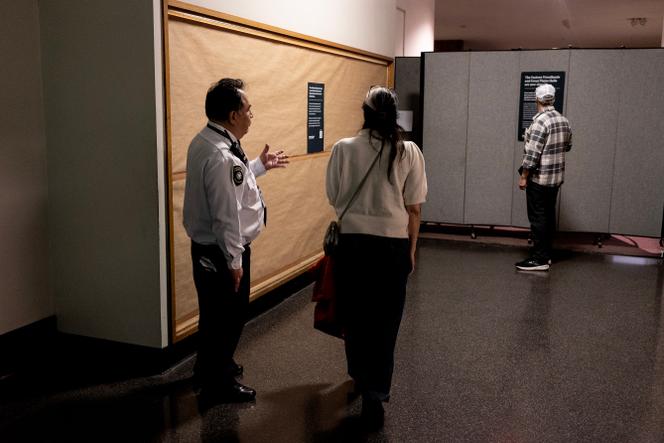


On Friday, January 26, children from Washington Heights, north of Harlem, were enthralled by the exhibits devoted to the Great Plains and Appalachian Indians at the American Museum of Natural History, filling in the questionnaires handed out by their teacher. What they didn't know was that they were the last to admire them. Starting the next day, these halls were closed to the public, without notice, as museum curator Sean Decatur announced in a letter to staff. "Beginning this Saturday, we will be closing two halls devoted to the indigenous cultures of North America: the Eastern Woodlands and the Great Plains."
The decision follows the Biden administration's implementation in early 2024 of a 1990 law signed by President George Bush Sr. (Native American Graves Protection and Repatriation Act), giving Native Americans a say over the works of their ancestors. "NAGPRA is both a human rights law and a cultural heritage law. Through NAGPRA, Congress acknowledged that human remains and other cultural items in holdings or collections or removed from federal or tribal lands belong to lineal descendants, Indian Tribes, and Native Hawaiian organizations," states the text published by the federal government, forcing museums to act after years of procrastination. As Decatur pointed out, "both rooms display artifacts that, under the new [federal] regulations, could require consent to exhibit."
Another significant reason is the exhibits' outdated nature; opened in 1966 and 1967, they appear antiquated and, at worst, can be seen as disrespectful. "Because these exhibits are also seriously outdated, we have decided (...) we will close the Halls," explained the curator, who continued: "The Halls we are closing are vestiges of an era when museums such as ours did not respect the values, perspectives, and indeed shared humanity of Indigenous peoples. Actions that may feel sudden to some may seem long overdue to others." The law applies only to Native Americans. Exhibitions devoted to other so-called First Peoples have not been closed at the Natural History Museum, with the exception of one in Hawaii.
This sudden decision came as a shock and raised a couple of issues. This first is that the Museum of Natural History itself, founded in the 19th century on the edge of Central Park, is struggling to come to terms with what it is, hindered by outdated exhibits that have shaped its history but have not been updated over time. As a museum of ethnology rather than art, it has found itself more vulnerable to accusations of colonialism, especially as it also holds the human remains of 2,200 Native Americans, according to the New York Times figure.
You have 50% of this article left to read. The rest is for subscribers only.
